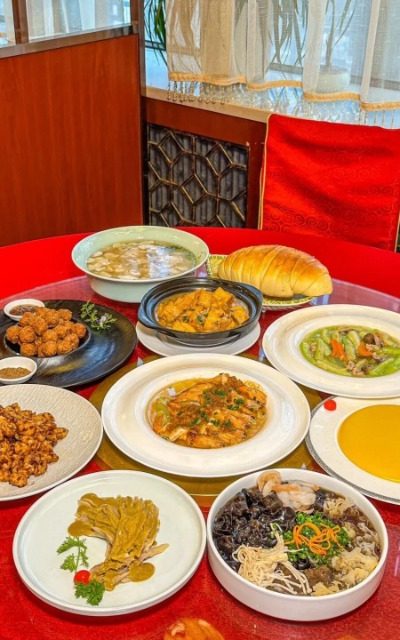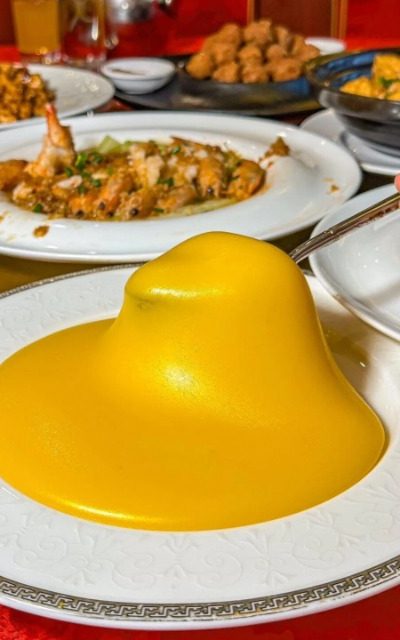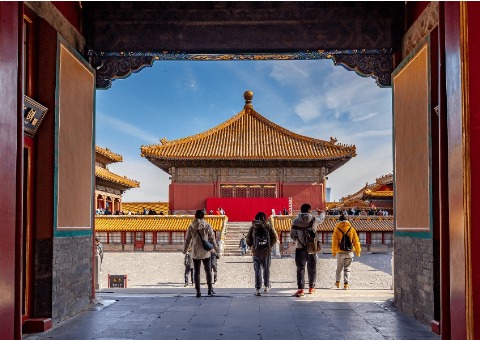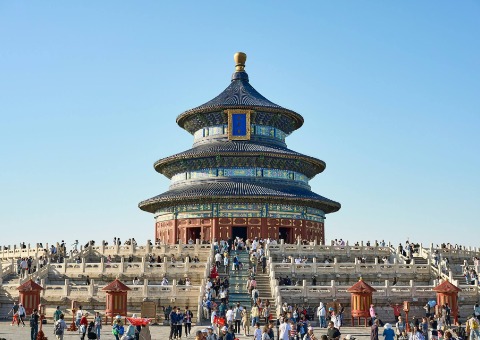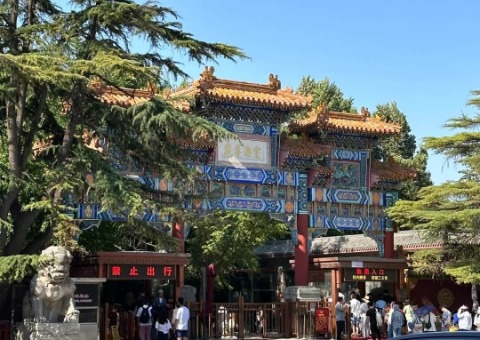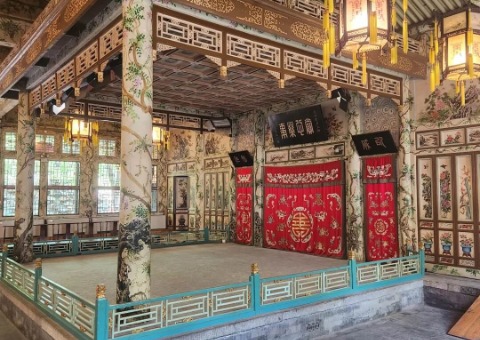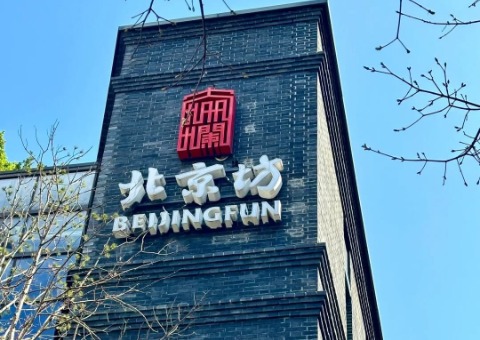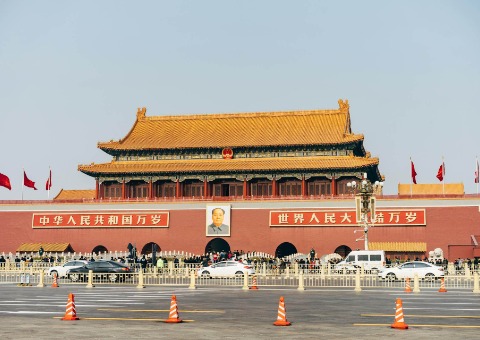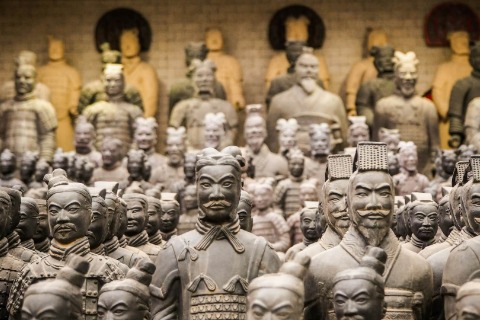Beijing Food Guide
The ancient city where the emperor lived definitely had the best food
As the capital city of the Yuan, Ming and Qing dynasties, Beijing was home to culinary elites from all over China. They combined the culinary skills of different parts of China with the local ingredients of Beijing, and gradually formed the Beijing cuisine that we see today.
As the seat of power and life of the emperors in ancient China, Beijing’s folk cuisine and the imperial food of the emperors interacted with each other to form the unique flavor of Beijing. From street food vendors to high-end restaurants, Beijing’s cuisine is diverse and has different flavors to satisfy the needs of different diners.
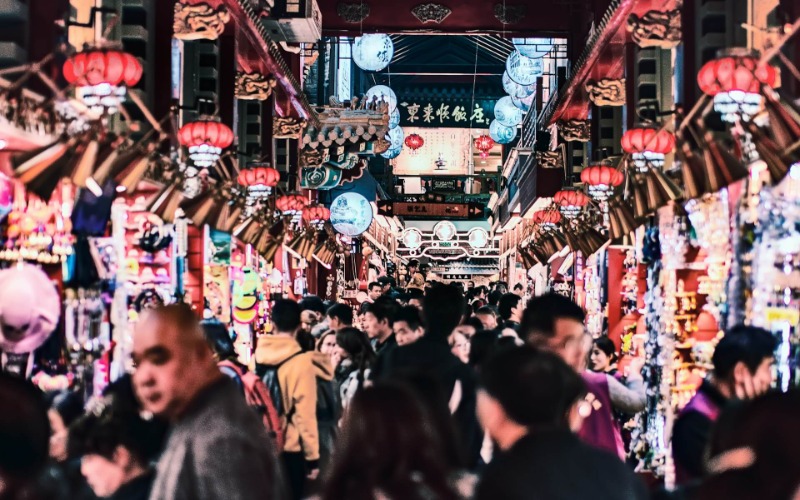
Table of Contents
Beijing specialties
Peking duck (Chinese name: 北京烤鸭)
Peking Duck has a long history, more than 160 years ago, and it was also the imperial cuisine of the Qing Dynasty emperors. A must-try for every visitor to Beijing is Peking Duck. Peking Duck is made from high-quality Peking Duck and roasted over a charcoal fire using fruit wood such as jujube wood and pear wood. The roasted duck is date-red in color, with a thin and crispy skin, and a tender exterior.
The most popular way to eat Peking duck is to spread some sweet flour sauce on a thin cake. Then you put a few slices of roast duck in the pancake, add a few strips of green onion, cucumber or radish, and roll up the pancake to eat. When you take a bite of the pancake, the meat is crispy and tender, and the flavor is delicious. Russian President Vladimir Putin once tasted Peking duck during his visit to China. Afterward, he said, “I only ate one piece at first, then I couldn’t hold back and ate the second piece, it was so delicious.”
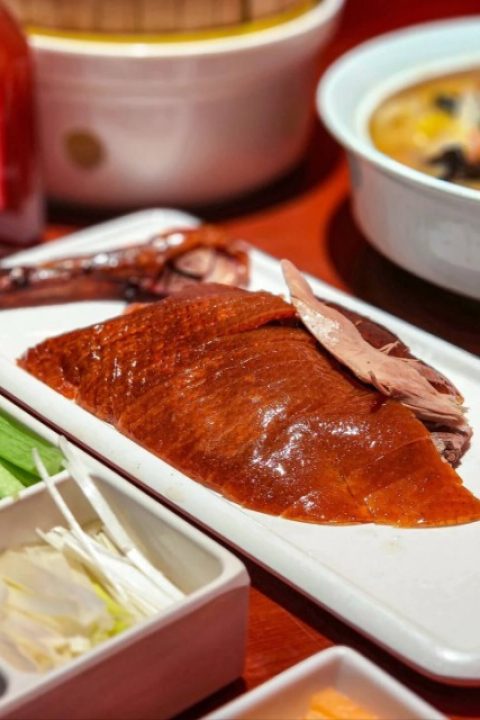
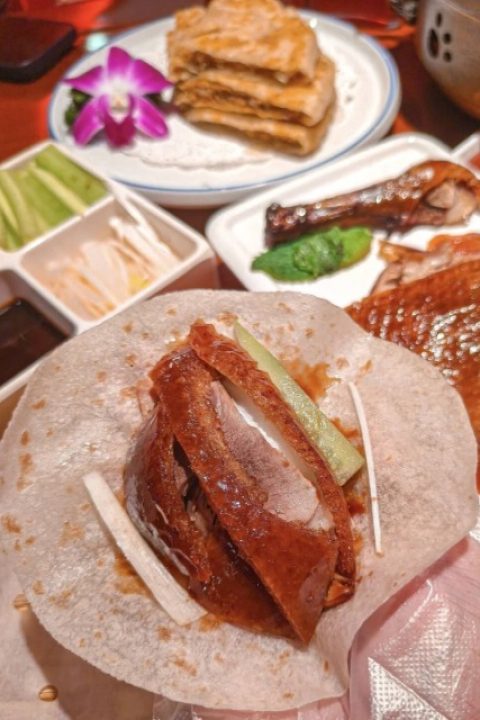
Beijing mutton hotpot (老北京涮羊肉)
Beijing mutton hotpot is a traditional cooking method from northern China, especially during the cold winter months. Copper pots have excellent heat conductivity, which allows the meat to curl up quickly at high temperatures, making it tender and flavorful.
People sit around a steaming hot pot and eat the meat, warming themselves from the cold and enjoying the pleasure of the food. Copper pot shabu-shabu is served in a clear broth with ginger and scallion as the base. The ingredients are fresh, high-quality lamb, dipped in a thick sesame sauce for a flavorful bite.
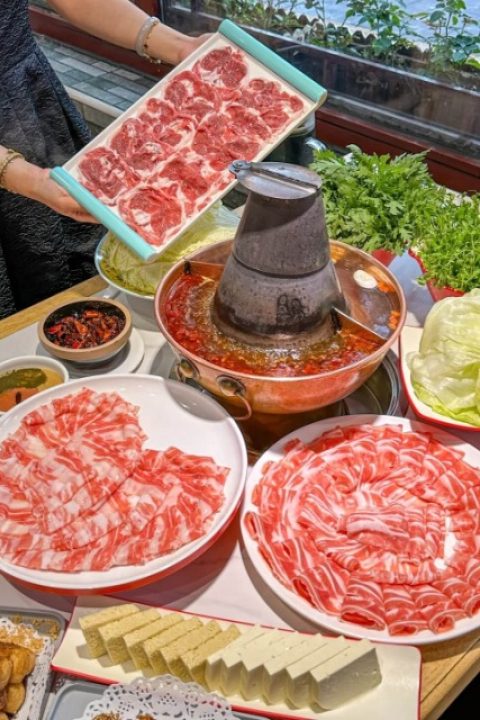
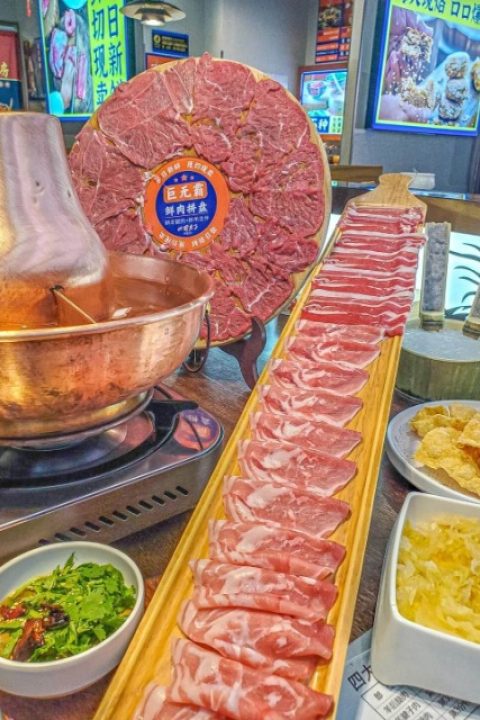
Noodles with soy bean paste (北京炸酱面)
Noodles with soy bean paste is regarded as one of the four traditional famous dishes in Beijing, which can be said to have a very high status. It has appeared in Beijing’s food culture as early as the Qing Dynasty.
Noodles with soy bean paste must be made with high-quality flour, which is kneaded and rolled several times to achieve a toothsome texture. Fried bean sauce is the soul of this delicacy, which is made of yellow sauce, sweet noodle sauce and minced meat stir-fried to give it a rich and flavorful texture.
In addition, noodles with soy bean paste is served with a wide variety of side dishes, including fresh vegetables such as cucumber, carrot and bean sprouts. Each side dish is carefully selected and processed to ensure that it goes perfectly with the noodles and the fried sauce. Noodles with soy bean paste can be found in almost every street in Beijing, from upscale restaurants to small stalls and vendors.
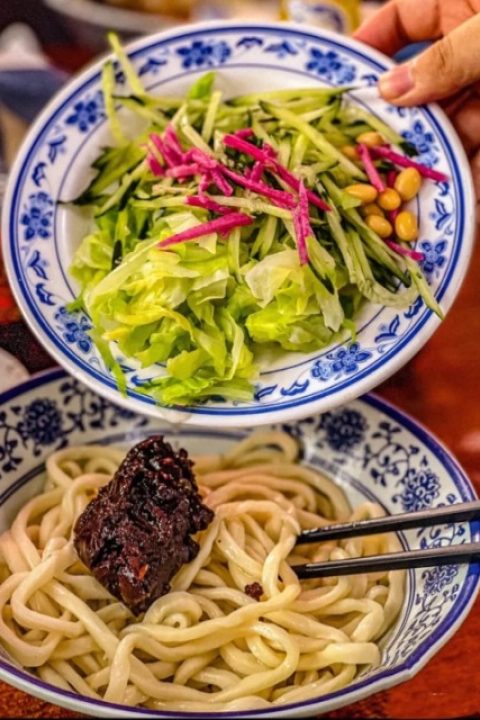
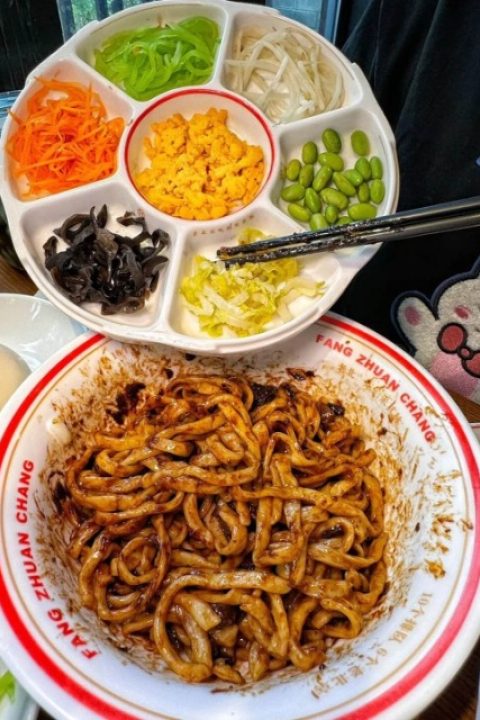
Pork with Bean Sauce (京酱肉丝)
Pork with Bean Sauce is a colorful and well-known Beijing dish. The main ingredient is pork loin, supplemented with sweet noodle sauce, green onion, ginger and other seasonings. The high-quality pork is shredded, marinated and deep-fried, then stir-fried with Beijing sauce and cucumber shreds. The meat is tender and the sauce is fragrant.
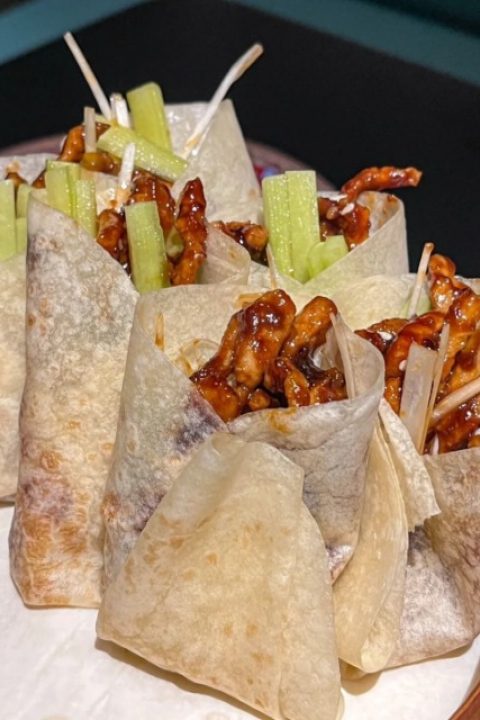
Lamb Spine Hot Pot (羊蝎子火锅)
Lamb Spine Hot Pot originated in the Yuan Dynasty (1271-1368) and is one of the traditional Mongolian cuisines. The hot pot is made of fresh lamb spine and various herbs boiled in a high soup, and the lamb spine meat is fragrant and tender but not greasy. First of all, lamb is rich in protein, iron, zinc and other trace elements, which help to improve the body’s immunity. In addition, the bone marrow in Lamb Spine Hot Pot is also rich in collagen and trace elements, which helps to beautify and nourish the skin.
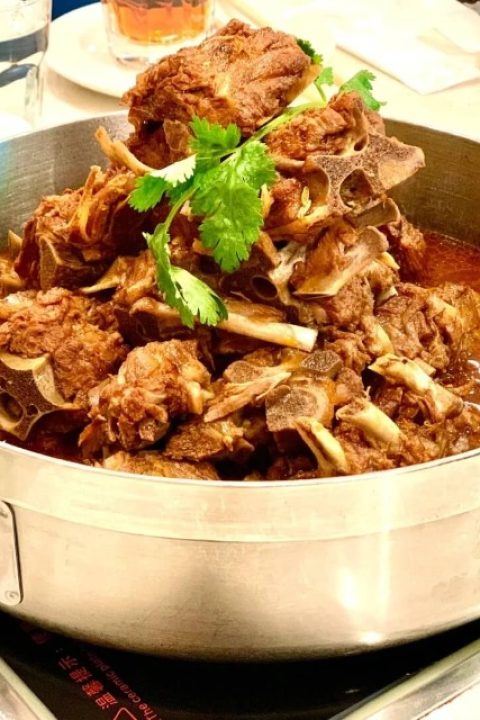
Aiwowo (Steamed Rice Cakes with Sweet Stuffing) (艾窝窝)
Aiwowo is a Halal-style snack made of glutinous rice in Beijing. It is a dessert made of glutinous rice flour, sesame paste, brown sugar, date paste and other ingredients. Aiwowo is snow-white in color, ball-shaped, soft and sticky in texture, and sweet in taste. Not only Beijingers like this snack, but also tourists visiting Beijing like to savor this Halal snack which is famous all over China.

Lǘdagunr (Glutinous Rice Rolls with Sweet Bean Flour) (驴打滚)
Lǘdagunr is one of the traditional snacks in Beijing, using glutinous rice, brown sugar and soybean flour as the main ingredients. It is soft and sticky, sweet and savory. Lǘdagunr is not only a delicious snack in Beijing, but also carries rich cultural connotations. It symbolizes reunion, happiness and sweetness, and is an indispensable dish for festivals and family gatherings in Beijing.
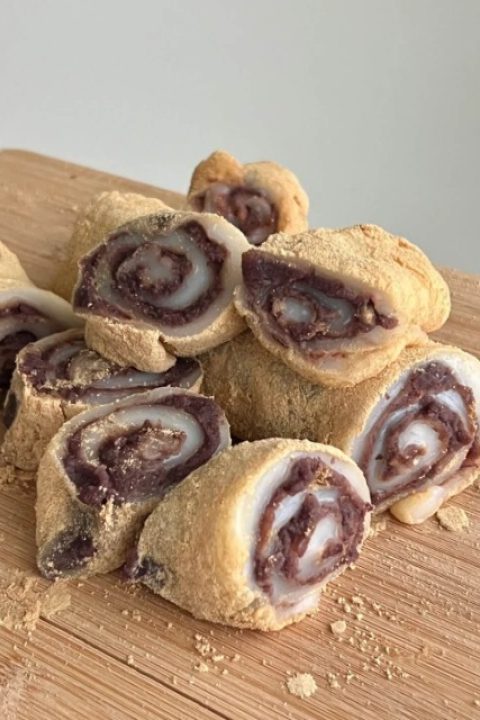
Beijing fermented bean juice (北京豆汁)
Beijing fermented bean juice originated in the Song Dynasty (960-1279) and flourished during the Ming and Qing dynasties. It was originally invented by people in the court to treat indigestion. Bean juice is made from fermented mung beans, which have a distinctive, sour flavor. Despite its unique flavor, which some people may not be accustomed to, bean juice has become a food culture and habit of the old Beijingers.
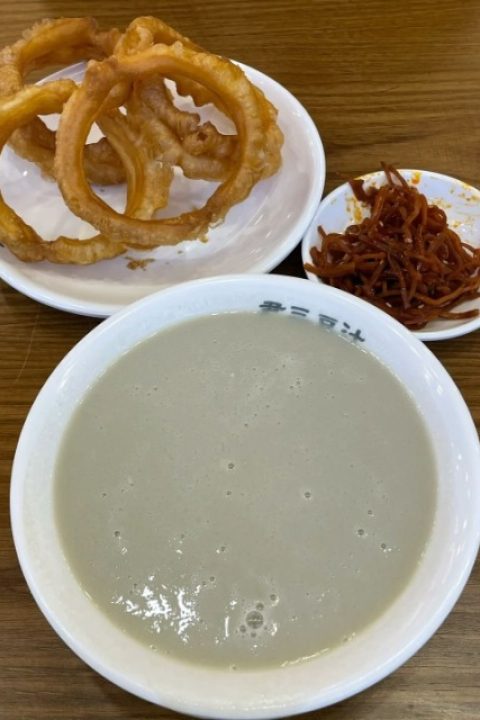
Beijing sweet pease pudding (豌豆黄)
Beijing sweet pease pudding is a traditional Beijing pastry that originated in the Ming Dynasty (1368-1644). According to historical records, Beijing sweet pease pudding was initially one of the delicious snacks served to the emperor, and then gradually spread to the people and became one of the favorite snacks of the common people. This snack is made of pea flour, sugar and other ingredients, and is steamed to create a soft, sweet and savory texture.Beijing sweet pease pudding is loved by the common people and has become an important festival and daily food.
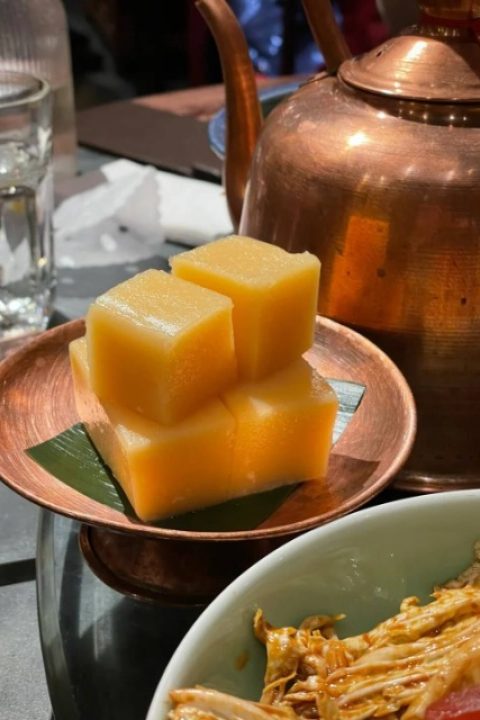
The most popular food street in Beijing
Gui Street (簋街)
Gui Street is known as “Beijing’s first food street” and is the hottest food street in Beijing. Its main dishes are spicy crayfish, spicy meat and crab, and other spicy dishes.
In this 1.5-kilometer-long street, there are nearly 200 restaurants of different styles and flavors. Here, you can taste the authentic eight Chinese cuisines. Gui Street is also a famous night market in Beijing. Many restaurants are open until the early hours of the morning, making it a great place for late-night snacks in Beijing.
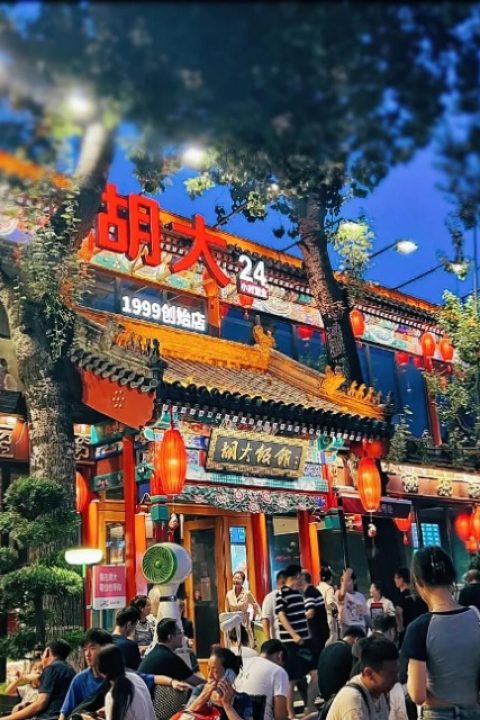
Ox Street (Niujie) (牛街)
Ox Street is known for its rich Islamic culture, historic mosques and many cuisines. It is home to a variety of authentic Halal snacks, including beef baozi and Beijing mutton hotpot. The biggest difference from other neighborhoods in Beijing is that many of the buildings on Ox Street have Islamic-style domes and are colored in the white and green favored by Muslims.
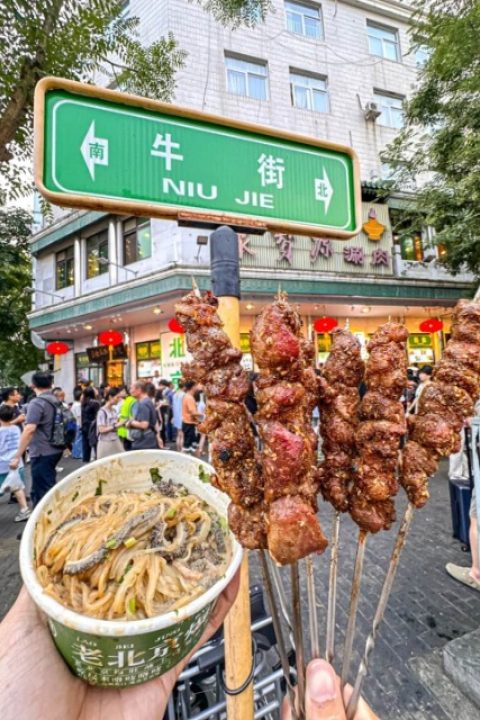
Huguo Temple Food Street (护国寺美食街)
Huguo Temple Food Street is 300 years old and is now the gold standard of Beijing’s food streets. At night, the streets are lined with streaming lights and the stores become very interesting. Because the stores here are built of bricks and tiles, they have a strong historical flavor. It brings together a variety of Beijing snacks, including Aiwowo, Beijing sweet pease pudding, bean noodle cake and other familiar old Beijing snacks.
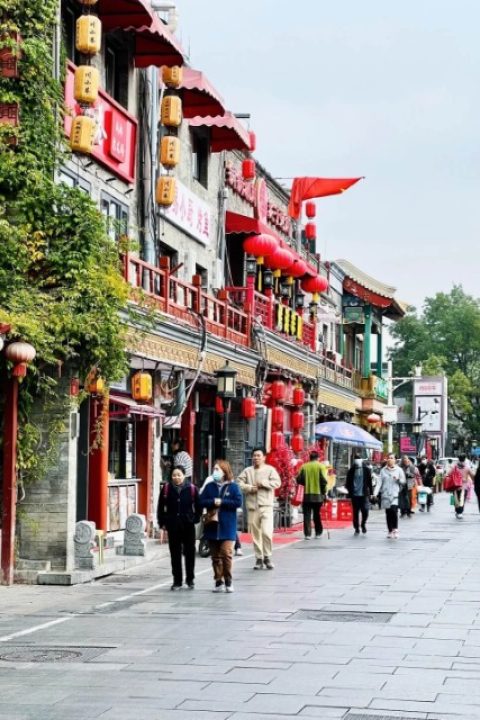
Nanluogu Lane (南锣鼓巷)
Nanluogu Lane is a hutong, which is not only one of the oldest historical neighborhoods in Beijing, but also a famous snack street in Beijing. It is a collection of small literary stores with specialties and a large variety of authentic old Beijing-style snacks, such as Beijing cheese, double-skinned milk, and big milk rolls. Each store has its own unique characteristics, and there is an endless stream of diners coming to forage for food. Literary young people often take this place as a must-visit food place when visiting Beijing.
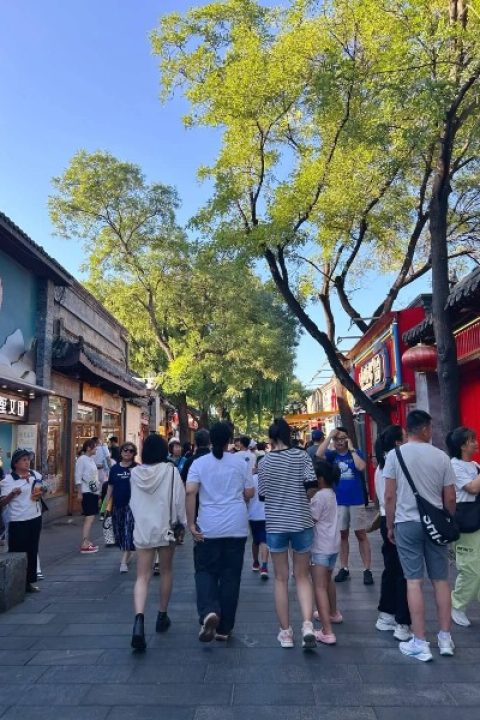
Qianmen Street is a famous commercial street in Beijing, located near Tiananmen Square and the Forbidden City. The architecture is primarily in the Ming and Qing styles. This area is home to many time-honored Chinese restaurants and authentic Beijing dishes, making it a favorite spot for tourists visiting Beijing. In the evening, colorful lights illuminate the street, creating a beautiful backdrop for photos.
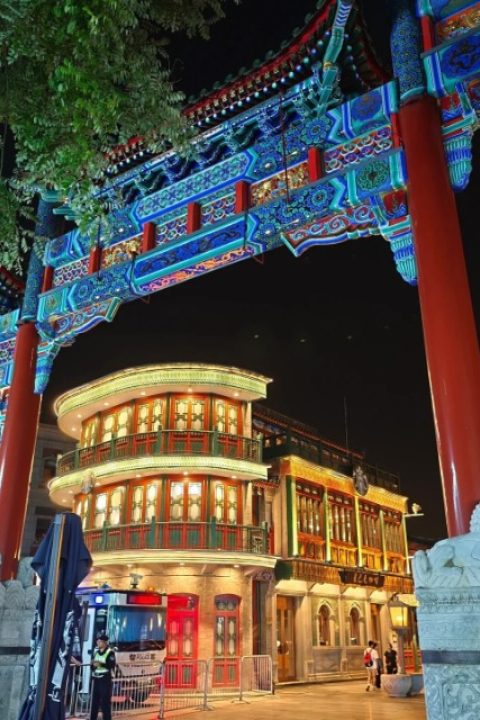
Yandai Diagonal Street (烟袋斜街)
Yandai Diagonal Street is 232 meters long, and the whole street is a collection of handicraft stores and all kinds of old Beijing-style snacks. It is not only a famous antique street in Beijing, but also one of the famous food streets in Beijing.
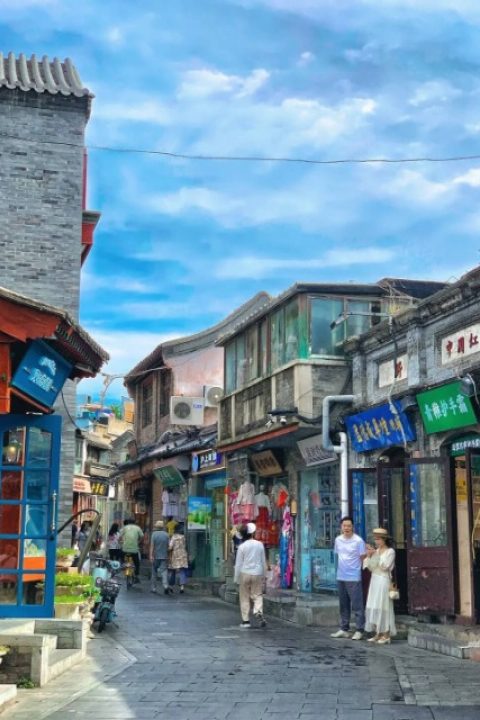
21 Block (合生汇21街区)
It is a large and unique themed Netflix neighborhood in Beijing, with the theme of “Late Night Dining”. When you walk into 21 Block, there are hundreds of specialty restaurants to satisfy your taste buds. There will also be a lot of nighttime mini-theaters and sports competitions.

Beijing's time-honored restaurants
Quanjude Peking Roast Duck (全聚德烤鸭)
Quanjude is a globally renowned old Chinese brand, founded in 1864, with a history of 160 years. It is famous for making Peking duck, and its first hung-oven roasted duck is loved by diners all over the world. Quanjude has chain stores in Qianmen, Wangfujing and Tiananmen in Beijing. The traditional eight-immortal tables and black lacquer counters in the stores are very unique to the old Beijing food culture.
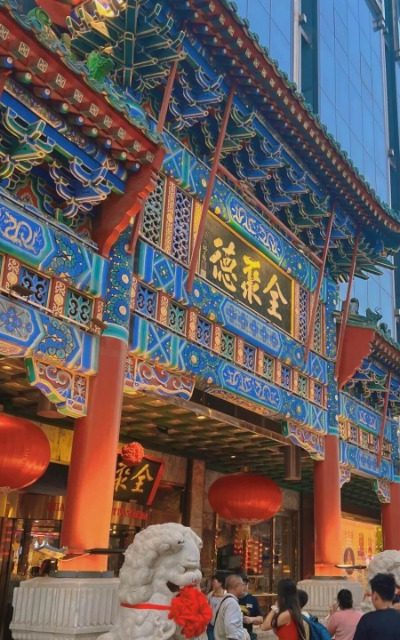
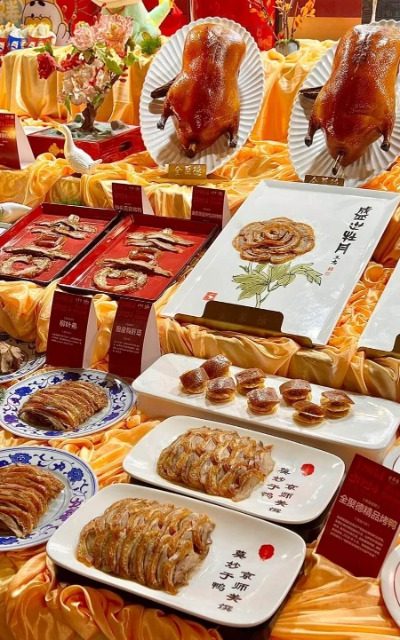
Dong Lai Shun Restaurant (东来顺饭庄)
Donglaishun is a time-honored brand in China, established in 1903, and it is a halal restaurant known for its hot pot lamb. The meat is exceptionally tender, and the lamb from Donglaishun is particularly famous for being “as thin as paper and as soft as cotton.” The restaurant’s decor showcases an elegant classical style, blending the rich red walls and yellow tiles characteristic of Beijing’s imperial architecture.
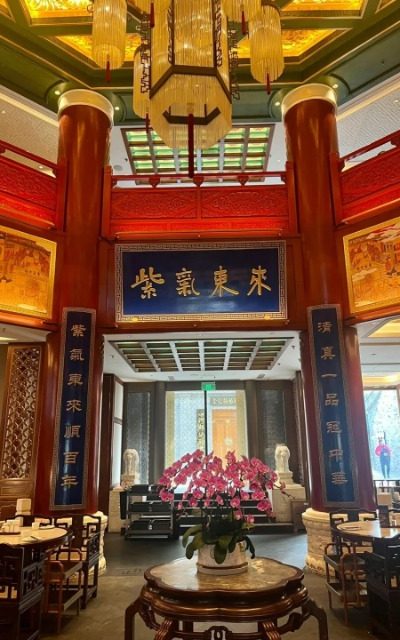
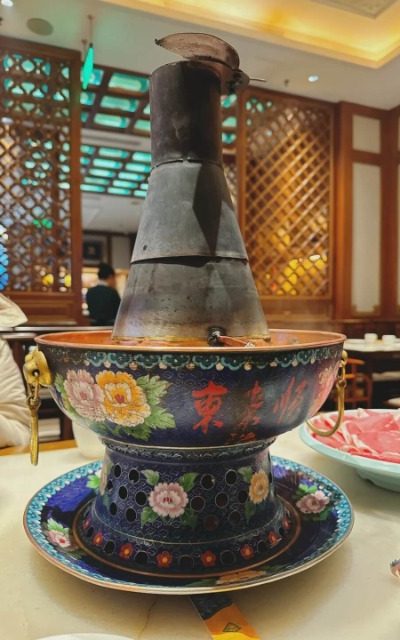
Fengzeyuan Restaurant (丰泽园)
Fengzeyuan Restaurant was founded in 1930. It has won the favor of diners with its long history, authentic Shandong cuisine, excellent service and elegant environment. The roasted sea cucumber with green onion and nine-turned large intestine are popular among customers.
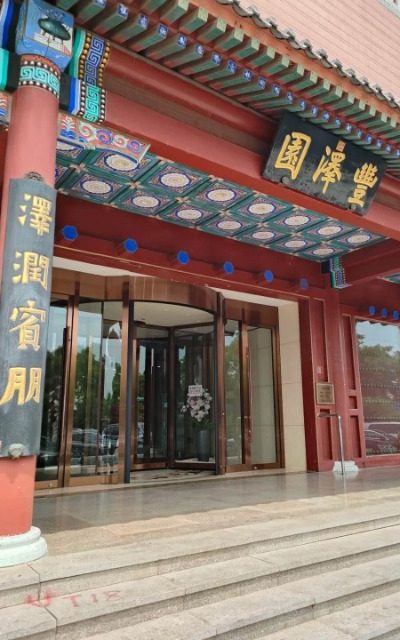
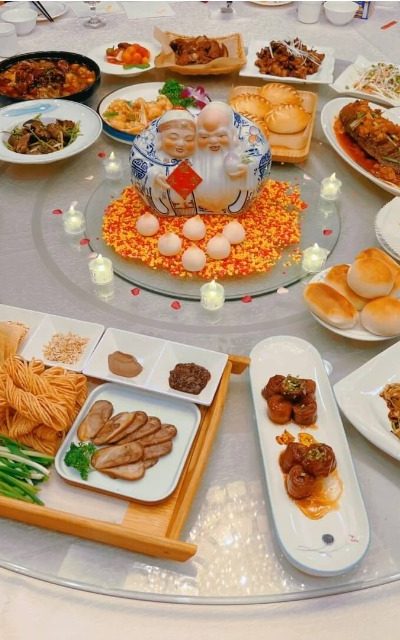
Beipinglou Restaurant (北平楼)
The best feature of Beipinglou lies in the restaurant’s decoration and the styling of the waiters. The décor incorporates elements of the Qing Dynasty, and the waiters are dressed as ancient palace staff to take your order. There are posters from the Republican era hanging on the walls of the restrooms, as well as traditional Chinese tables, chairs, benches and sideboards. Every detail reflects the deep-rooted culture of old Beijing, as if you have traveled to the Qing Dynasty period in China.
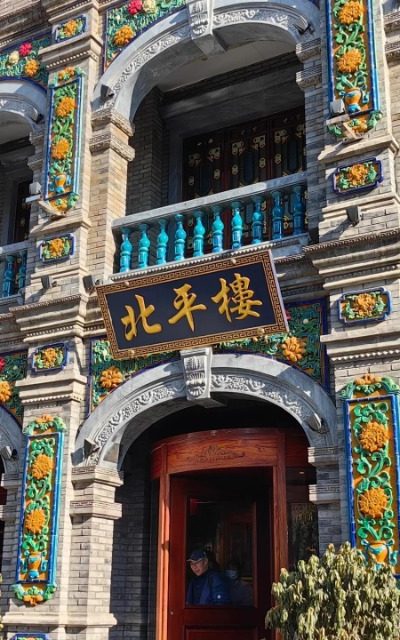
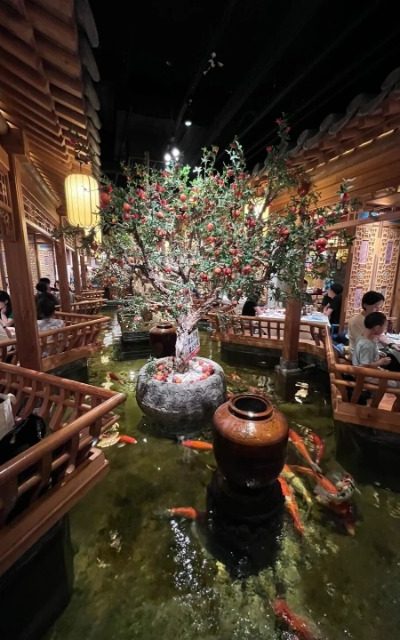
Bianyi Fang (便宜坊)
Bianyi Fang, as a historical “old Chinese” restaurant in Beijing, has a history of more than 600 years.Bianyi Fang is famous for its unique roasting technique in a casserole oven, which produces ducks with a reddish color and a shiny, crispy skin. It is worth mentioning that since there is no open flame during the roasting process, it is now known as “green duck”, which is both healthy and environmentally friendly. This roast duck is loved by diners for its vegetable aroma, fat but not greasy taste, unique flavor and rich nutritional value.
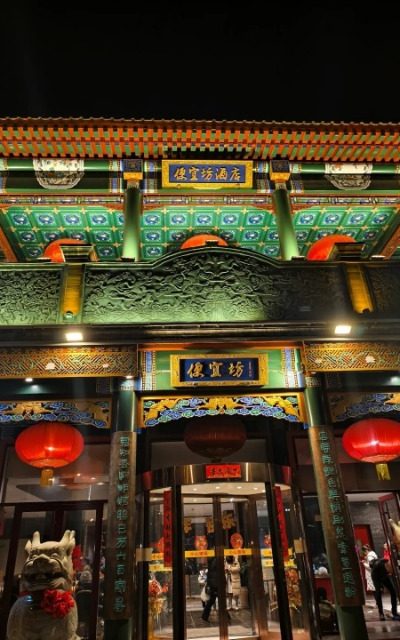
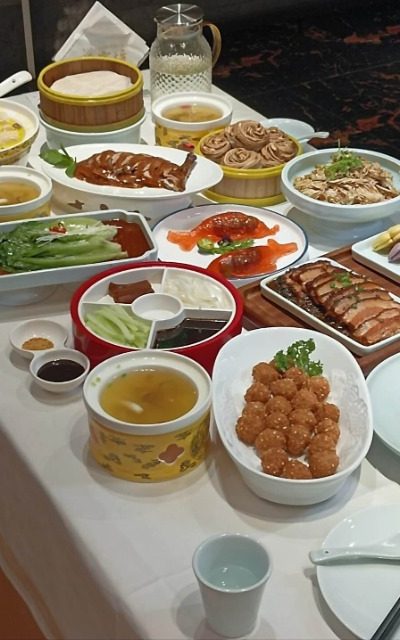
Liu Quan Ju (柳泉居)
Liuquanju, established in the Ming Dynasty in 1567, is a renowned old brand of Shandong cuisine in Beijing. Their bean buns are the most famous in the city, and if you don’t arrive early, you might miss out. The restaurant not only combines the essence of imperial, Shandong, and halal cuisines, but it also excels in various cooking techniques such as braising, stir-frying, and stewing. Signature dishes include Golden Chicken, Silver Ear Mushroom with Shrimp, and Delicate Abalone.
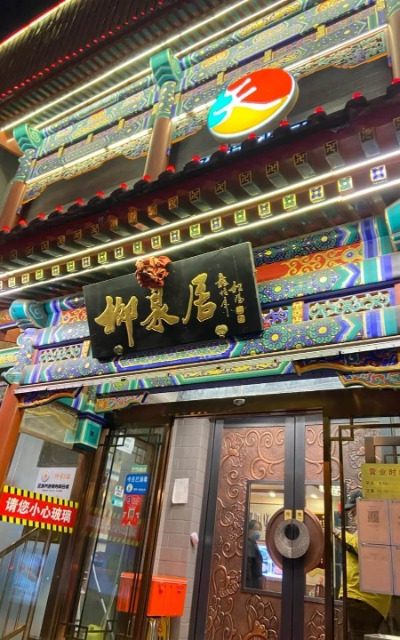
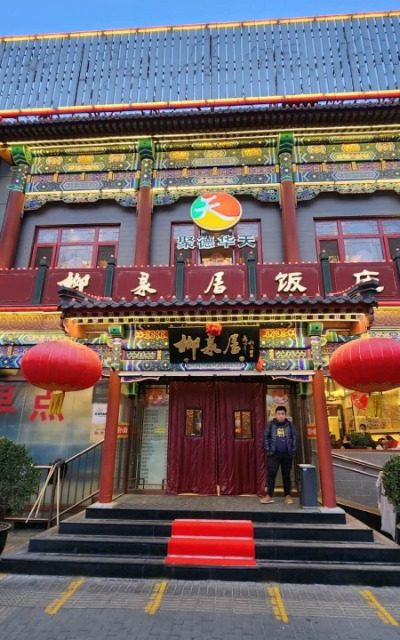
Jubao Yuan (聚宝源)
If you want to eat Beijing mutton hotpot, you must come to Jubao Yuan. Jubao Yuan has a long line of people lining up every day. Jubao Yuan’s lamb comes from the grasslands of Ximeng, the best place for lamb in China. Uzhumqin sheep are known as the “best sheep in the world” in China. The meat is tender, the fat is evenly distributed, and there is no obvious stink.
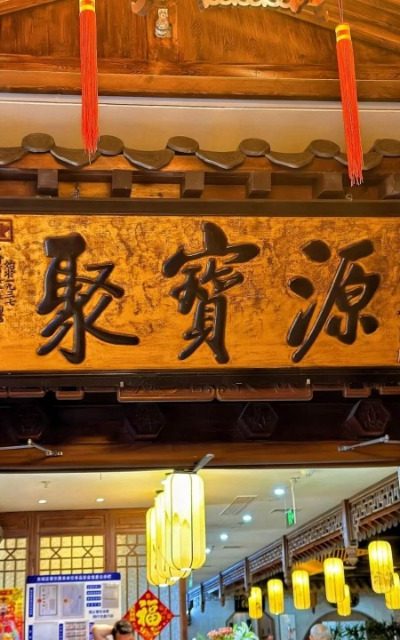
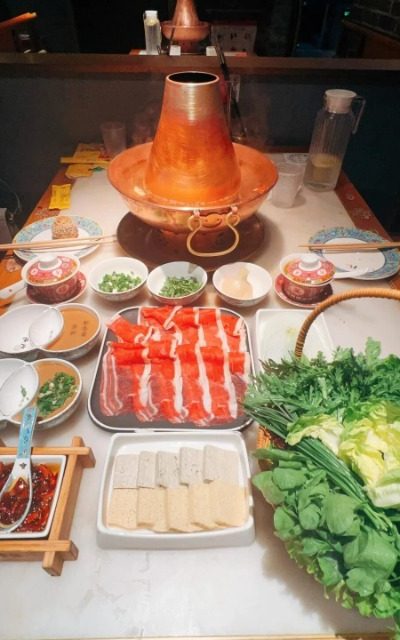
Hongbinlou Restaurant (鸿宾楼)
Founded in 1853, Hongbinlou Restaurant was originally located in Tianjin and later moved to Beijing. It is regarded as “the first halal restaurant in Beijing” by gourmets, Muslims and the public.
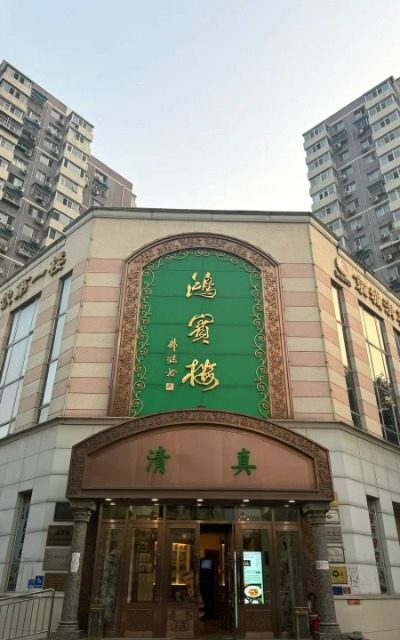
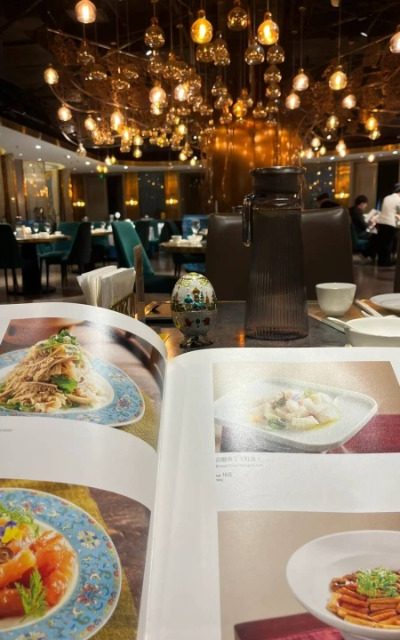
Kaorou Wan (烤肉宛)
Kaorou Wan has the longest history of any barbecue restaurant in Beijing, having been established in 1686 AD, more than 300 years ago. The restaurant is famous for its selection of beef and mutton, excellent knife work and exquisite ingredients. A mouthful of beef will fill your mouth with the flavor of beef fat, which you can’t forget for a long time.
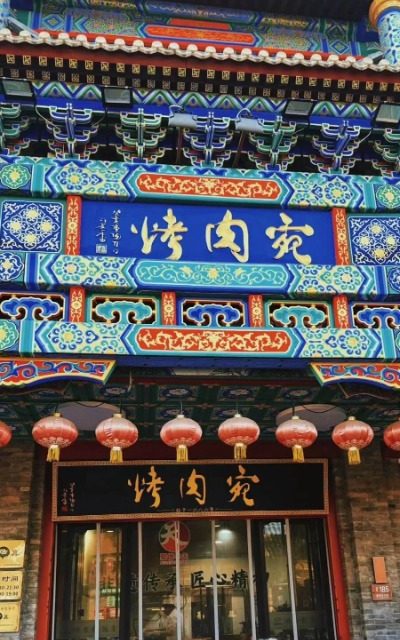
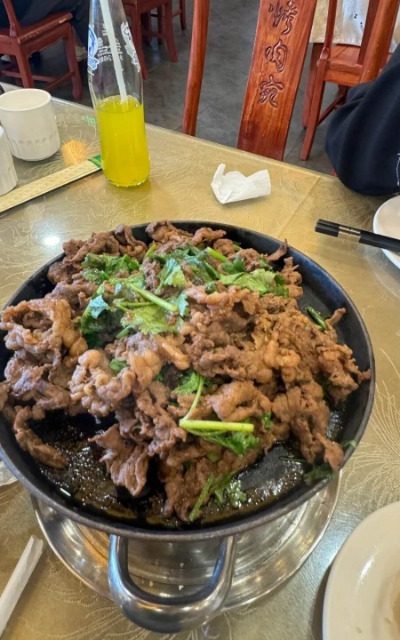
Tong He Ju (同和居)
Founded in 1822, Tongheju has a history of more than 200 years, and is a must-visit restaurant in Beijing. One of its dishes is called “three non-stick”, which is famous for its “non-stick chopsticks, non-stick plates and non-stick teeth”.
